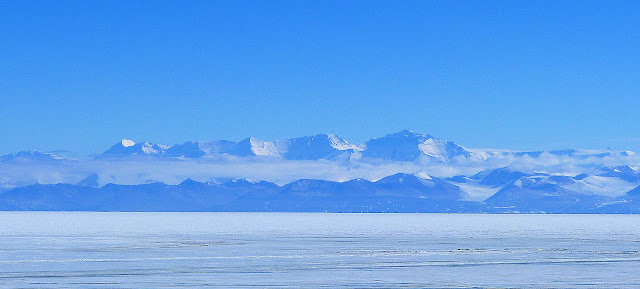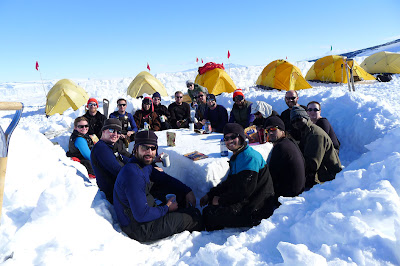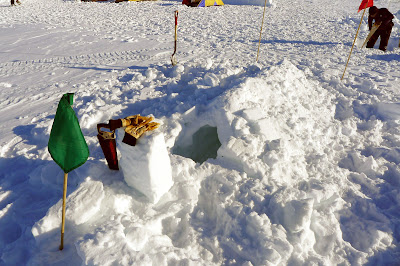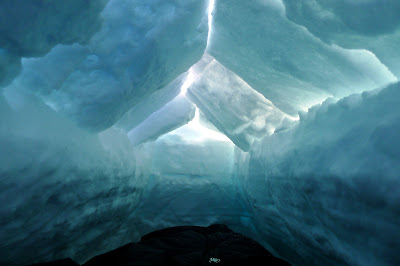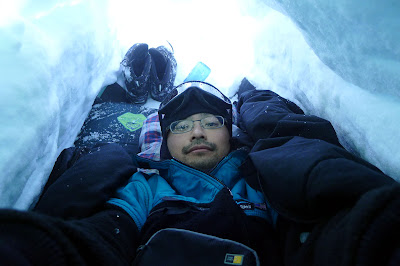LC-130 passengers and cargo to the South Pole
As usual, the Air Force crews kindly allowed us to look around the cockpit during the flight.
We finally landed at the South Pole! It is always interesting to experience quite a big temperature difference between pre-flight at McMurdo (approx. 32 deg F or 0 deg C) and post-flight at the South Pole (approx. -10 deg F or -25 deg C) and very significant difference in barometric pressure (sea level vs 10000 ft or 3000 m) for such a short time.
Soon after we arrived and had lunch, Bob, I (Hyomin), and Father Devlin (from left) went to the geographic south pole located in front of the newly built U.S Amunsen-Scott South Pole Station. Surprisingly and thankfully, I felt pretty well this time whereas I was very sick about almost one day as soon as I arrived at the Pole 2 years ago because of high altitude sickness. Father Devlin flew with us today for his mass at the Pole and will get back to McMurdo tomorrow. This would certainly be the most expensive mass in the world!
Getting the Antarctic stamps (both McMurdo and South Pole) on my passport is one of the things that I like to do as soon as I arrive. No visa or entry process is required to enter Antarctica, though. This is just for fun!
This is my dorm room at the Pole. Unlike at McMurdo, everyone at the South Pole lives in a single dorm. Especially, almost half of the South Pole station population stays in the very nice brand-new building as seen in the picture. The current total population here at the Pole is about 245.
